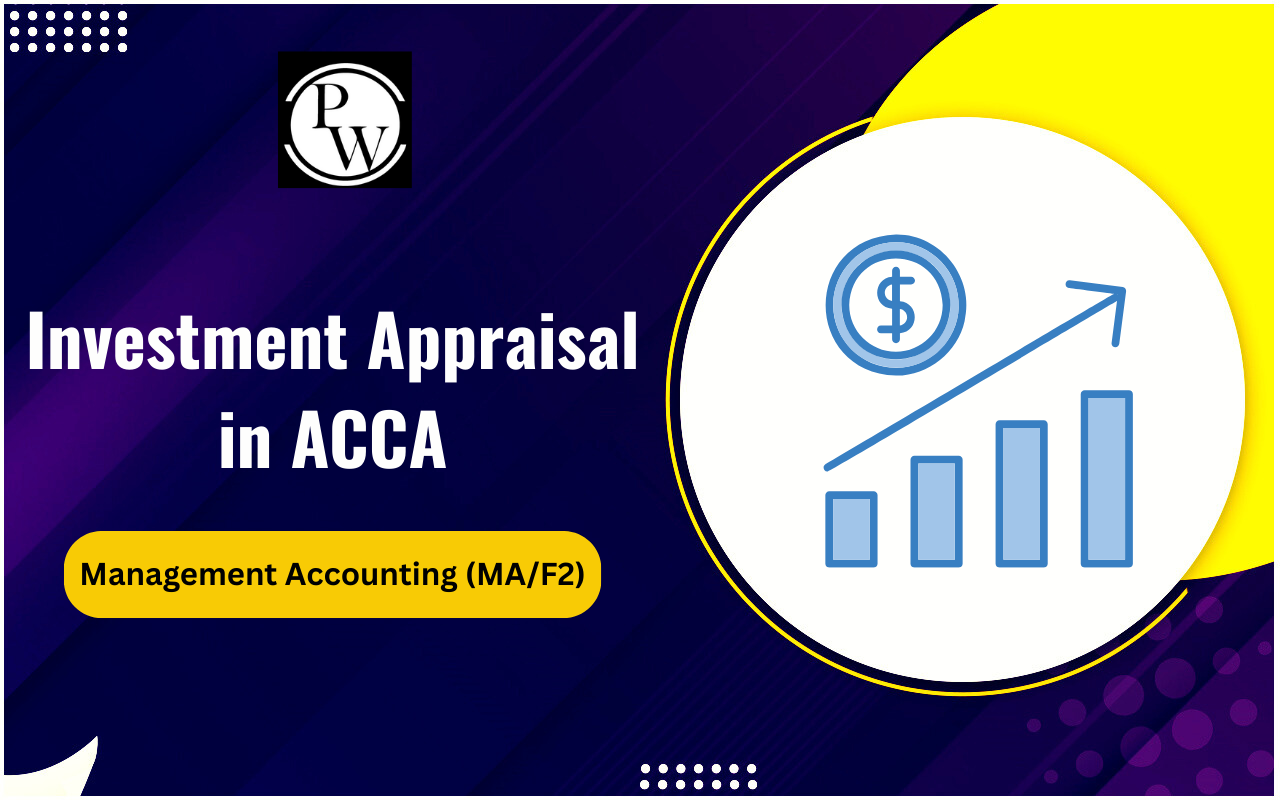
Leases play a pivotal role in the operations of many businesses worldwide. Whether it's renting office space, leasing vehicles, or acquiring machinery, leases are a common financial instrument used to access assets without incurring the upfront costs of ownership.
In January 2019, the International Financial Reporting Standards (IFRS) introduced a significant change to the accounting treatment of leases with the implementation of IFRS 16. This standard was not only a major shift in lease accounting principles but also had a profound impact on financial reporting in India.Background of IFRS 16
The introduction of IFRS 16 marked a significant milestone in the evolution of lease accounting standards. The background of IFRS 16 encompasses a history of concerns about the lack of transparency in lease accounting and a concerted effort to address these issues.History and Development
IFRS 16's history traces back to the early 2000s when worries began arising about off-balance sheet financing. Companies were structuring lease agreements in a manner that permitted them to exclude significant lease-related debts from their financial statements. This practice created challenges for investors, analysts, and other interested parties in accurately assessing a company's genuine financial status and commitments. Recognizing the necessity to address these concerns, the International Accounting Standards Board (IASB) launched an initiative to overhaul lease accounting standards. This project, aimed at replacing the existing lease accounting standard, IAS 17, commenced in 2006. Over the ensuing years, the IASB conducted extensive consultations with stakeholders representing various sectors, including preparers, financial statement users, auditors, and regulators. These consultations incorporated exposure drafts, discussion papers, and comment periods, facilitating the consideration of a wide array of viewpoints. The development of IFRS 16 involved complex technical considerations, as well as a careful balance between enhancing transparency and avoiding undue complexity in financial reporting.Key Objectives of IFRS 16
The development of IFRS 16 was driven by several key objectives:- Enhanced Transparency: The primary goal of IFRS 16 was to improve transparency in lease accounting. By requiring lessees to recognize assets and liabilities for nearly all leases, it aimed to provide stakeholders with a clearer and more accurate picture of a company's financial position and lease-related commitments.
- Aligning with Economic Reality: IFRS 16 aimed to align financial reporting with the economic reality of lease transactions. It recognized that a lease essentially represents the right to use an asset for a specified period, and this right has financial implications that should be reflected in a company's financial statements.
- Simplification: While enhancing transparency was a primary objective, IFRS 16 also aimed to simplify lease accounting. The previous standard, IAS 17, allowed for the classification of leases into operating or finance leases, leading to complexity and potential manipulation of lease structures. IFRS 16 sought to eliminate this distinction, simplifying the treatment of leases for lessees.
Adoption of IFRS 16 in India
India has been steadily aligning its accounting standards with international norms to enhance the transparency and comparability of financial reporting. The adoption of IFRS 16 was a significant milestone in this journey. This section delves into the timeline of adoption, its applicability, transition methods, and the pivotal role of regulatory bodies.Timeline and Applicability
The adoption of IFRS 16, or its local equivalent Ind AS 116, marked a fundamental shift in lease accounting practices for Indian companies. It became effective for reporting periods beginning on or after April 1, 2019. This meant that Indian companies were required to follow the new lease accounting standard for their financial reporting from that date onward. The applicability of Ind AS 116 extends to various types of entities, including listed companies, certain categories of unlisted companies based on their net worth and borrowing levels, and companies that are part of larger groups where the parent or ultimate holding company follows Ind AS.Transition Methods Allowed:
IFRS 16 provided companies with two transition methods for its adoption:- Full Retrospective Approach: Under this method, companies restate comparative financial statements as if IFRS 16 had always been in effect. This approach requires adjusting the opening balance of retained earnings for the earliest period presented and applying the standard to all leases, both existing and new.
- Modified Retrospective Approach: This method offers a more practical alternative, allowing companies to apply IFRS 16 at the date of initial application (April 1, 2019) without restating comparative information. The standard is applied only to leases existing at the beginning of the current reporting period. Companies opting for this approach must recognize the cumulative effect of initially applying IFRS 16 as an adjustment to the opening balance of retained earnings on April 1, 2019.
Role of Regulatory Bodies
The adoption of IFRS 16 in India was made possible through the efforts and guidance of regulatory bodies, primarily the Institute of Chartered Accountants of India (ICAI). ICAI played a pivotal role in the implementation of Ind AS 116, aligning Indian accounting standards with international best practices. They issued detailed guidance and recommendations to assist companies in transitioning to the new lease accounting standard seamlessly. ICAI also conducted awareness programs, seminars, and training sessions for accounting professionals, ensuring that they were well-equipped to understand and implement the standard correctly. Additionally, they addressed queries and provided clarifications to facilitate a smooth transition for businesses of all sizes and industries. The role of ICAI and other regulatory bodies in ensuring a successful transition to IFRS 16 cannot be overstated. Their proactive involvement not only facilitated compliance but also enhanced the overall financial reporting landscape in India, bringing it closer to global standards of transparency and accountability.Impact on Financial Reporting
The implementation of IFRS 16 has brought about profound changes in the financial reporting practices of lessees. These changes are primarily driven by the requirement to recognize nearly all leases on the balance sheet. In this section, we will explore the impact of IFRS 16 on lessees in greater detail.Balance Sheet Changes
Under IFRS 16, lessees must recognize the following items on their balance sheets: Right-of-Use Assets (ROU Assets) Lessees now recognize ROU assets on the balance sheet. These assets represent the right to use the leased asset throughout the lease term. ROU assets are typically measured at the present value of future lease payments, which includes lease payments that are fixed in nature, variable payments that depend on an index or a rate, and any payments reasonably expected to be made by the lessee, such as maintenance costs. Lease Liabilities A corresponding lease liability is recognized on the balance sheet. This liability represents the lessee's obligation to make lease payments over the lease term. Like ROU assets, lease liabilities are measured at the present value of future payments. The recognition of ROU assets and lease liabilities has a significant impact on the lessee's financial statements:- Increased Assets: Lessees see a notable increase in total assets due to the addition of ROU assets. This change reflects the company's right to use leased assets during the lease term.
- Increased Liabilities: The recognition of lease liabilities on the balance sheet reflects the financial obligation to make future lease payments. This can result in higher total liabilities.
- Modifications in Financial Metrics: Alterations in both assets and liabilities can impact critical financial metrics, like the debt-to-equity ratio. A heightened debt-to-equity ratio might hold significance for financing choices and creditworthiness.
Income Statement Changes
The income statement of lessees is also significantly affected by IFRS 16: Impact on Profit and Loss- Under the previous standard, IAS 17, operating lease expenses were recognized as a straight-line cost on the income statement. This led to consistent and predictable lease expense recognition over the lease term.
- IFRS 16, however, introduces a more complex expense recognition pattern. Lessees recognize depreciation of ROU assets and interest expense on the lease liability. This change may result in higher expenses in the earlier years of a lease, reflecting the front-loading of interest costs.
- Consequently, lessees may experience a significant impact on their profit and loss statements, with increased expenses in the initial years of leases.
- Earnings Before Interest, Taxes, Depreciation, and Amortization (EBITDA) is a key financial metric often used for assessing a company's operating performance.
- IFRS 16 can impact EBITDA. While the standard adds back the lease depreciation to EBITDA, it includes the interest expense on the lease liability. Therefore, lessees need to carefully consider how the presentation of EBITDA might change under IFRS 16 and communicate these changes to stakeholders.
- The inclusion of interest expense can affect how investors and analysts view a company's profitability and financial performance.
Disclosures and Transparency
In addition to changes in the balance sheet and income statement, IFRS 16 places a strong emphasis on enhanced disclosures to provide users of financial statements with a better understanding of a company's leasing activities. Lessees are required to provide the following disclosures: Information about Lease Agreements Lessees must provide detailed information about the terms and conditions of material lease agreements. This includes information about lease incentives, lease terms, and options to extend or terminate leases. Significant Judgments and Estimates Companies need to disclose information regarding judgments and estimates made in applying IFRS 16. This includes information about the determination of the discount rate used to measure lease liabilities and any assessments related to lease term options. Maturity Analysis Lessees are required to present a schedule of future lease payments, breaking down the amounts due for each of the following years and separately presenting the amounts due after five years Reconciliation of Lease Liabilities A reconciliation of changes in lease liabilities from the beginning to the end of the reporting period provides insight into how these obligations evolve over time. Effects of Leases on Financial Statements Companies must provide a qualitative and quantitative explanation of how IFRS 16 affects their financial statements. This disclosure helps users understand the impact of the new standard on the company's financial position, performance, and cash flows.Impact on Lessors
While the primary focus of IFRS 16 is on lessees and the changes they must make to their financial reporting, lessors, the entities that lease out assets to others, are also impacted by the new lease accounting standard. Here's a detailed look at the implications for lessors:Changes in Revenue Recognition
Under IFRS 16, lessors continue to classify leases as either finance leases or operating leases. However, the criteria for determining the classification have changed. Finance leases are now recognized when the transferred asset is one of the following:- The underlying asset is of such a specialized nature that it is unlikely to have an alternative use to the lessor at the end of the lease term.
- The lessee receives most of the economic benefits from the use of the underlying asset throughout the lease term.
- Changes in Lease Portfolio Composition: Some leases that were previously classified as operating leases may now meet the criteria for finance lease classification under IFRS 16. As a result, lessors may see shifts in the composition of their lease portfolios, potentially impacting their financial statements and key performance metrics.
- Impacts on Revenue Recognition Patterns: Finance leases result in a different revenue recognition pattern compared to operating leases. This change can influence the timing and distribution of lease income for lessors.
- Financial Statement Presentation: Lessors may need to adjust their financial statement disclosures to ensure that the classification of leases and the corresponding revenue recognition are clearly presented to users of their financial statements.
Risk Assessment and Management
IFRS 16 has also led lessors to reconsider their approach to risk assessment and management, particularly regarding credit risk associated with lessees.- Credit Risk Assessment: With changes in lease classification criteria, lessors may encounter lessees with different credit risk profiles. Finance leases often involve lessees with a stronger financial position, as they tend to involve high-value and specialized assets. Operating leases, on the other hand, may include lessees with varying creditworthiness. Lessors need to assess and manage credit risk effectively in this context.
- Implications for Business Strategy: Changes in the composition of a lessor's lease portfolio may impact their business strategy. For example, a shift towards finance leases may necessitate a stronger focus on financing and asset management, while a more significant presence of operating leases may require a greater emphasis on lease administration and service.
- Contractual Agreements and Covenants: Lessors should review contractual agreements and covenants with lenders and investors to ensure that the changes in lease accounting do not trigger covenant violations or necessitate renegotiation of agreements.
- Risk Mitigation Strategies: In response to changes in lease portfolio composition, some lessors may consider implementing risk mitigation strategies such as diversifying their lessee base, implementing credit enhancement measures, or revising lease pricing structures.
IFRS 16: Leases - Impact on Financial Reporting FAQs
Why was the introduction of IFRS 16 necessary?
IFRS 16 was implemented to improve the transparency of lease accounting. It mandates that lessees include almost all leases on their balance sheets, ensuring that financial reporting aligns with the economic reality of lease transactions.
What effect does IFRS 16 have on a company's debt-to-equity ratio?
The influence of IFRS 16 on the balance sheet can result in alterations to various financial ratios, including the debt-to-equity ratio. These changes can impact a company's financing choices and its creditworthiness.
What is the significance of Right-of-Use (ROU) assets in the context of IFRS 16?
ROU assets represent a lessee's entitlement to use leased assets and are of great importance within the framework of IFRS 16. They mirror the value of the leased assets and are officially recognized on the balance sheet.
How does IFRS 16 impact a company's income statement?
IFRS 16 alters the manner in which lease expenditures are recognized, which may potentially lead to higher expenses during the initial years of a lease. This alteration can affect the company's income statement.
What are the disclosure requirements imposed by IFRS 16, and why are they significant?
IFRS 16 mandates more comprehensive disclosures regarding lease agreements, as well as judgments and estimates related to them. These disclosures serve to offer stakeholders a clearer comprehension of a company's commitments concerning leases and how these commitments impact its financial statements.
Talk to a counsellorHave doubts? Our support team will be happy to assist you!

Check out these Related Articles
Free Learning Resources
PW Books
Notes (Class 10-12)
PW Study Materials
Notes (Class 6-9)
Ncert Solutions
Govt Exams
Class 6th to 12th Online Courses
Govt Job Exams Courses
UPSC Coaching
Defence Exam Coaching
Gate Exam Coaching
Other Exams
Know about Physics Wallah
Physics Wallah is an Indian edtech platform that provides accessible & comprehensive learning experiences to students from Class 6th to postgraduate level. We also provide extensive NCERT solutions, sample paper, NEET, JEE Mains, BITSAT previous year papers & more such resources to students. Physics Wallah also caters to over 3.5 million registered students and over 78 lakh+ Youtube subscribers with 4.8 rating on its app.
We Stand Out because
We provide students with intensive courses with India’s qualified & experienced faculties & mentors. PW strives to make the learning experience comprehensive and accessible for students of all sections of society. We believe in empowering every single student who couldn't dream of a good career in engineering and medical field earlier.
Our Key Focus Areas
Physics Wallah's main focus is to make the learning experience as economical as possible for all students. With our affordable courses like Lakshya, Udaan and Arjuna and many others, we have been able to provide a platform for lakhs of aspirants. From providing Chemistry, Maths, Physics formula to giving e-books of eminent authors like RD Sharma, RS Aggarwal and Lakhmir Singh, PW focuses on every single student's need for preparation.
What Makes Us Different
Physics Wallah strives to develop a comprehensive pedagogical structure for students, where they get a state-of-the-art learning experience with study material and resources. Apart from catering students preparing for JEE Mains and NEET, PW also provides study material for each state board like Uttar Pradesh, Bihar, and others
Copyright © 2025 Physicswallah Limited All rights reserved.
Get App







